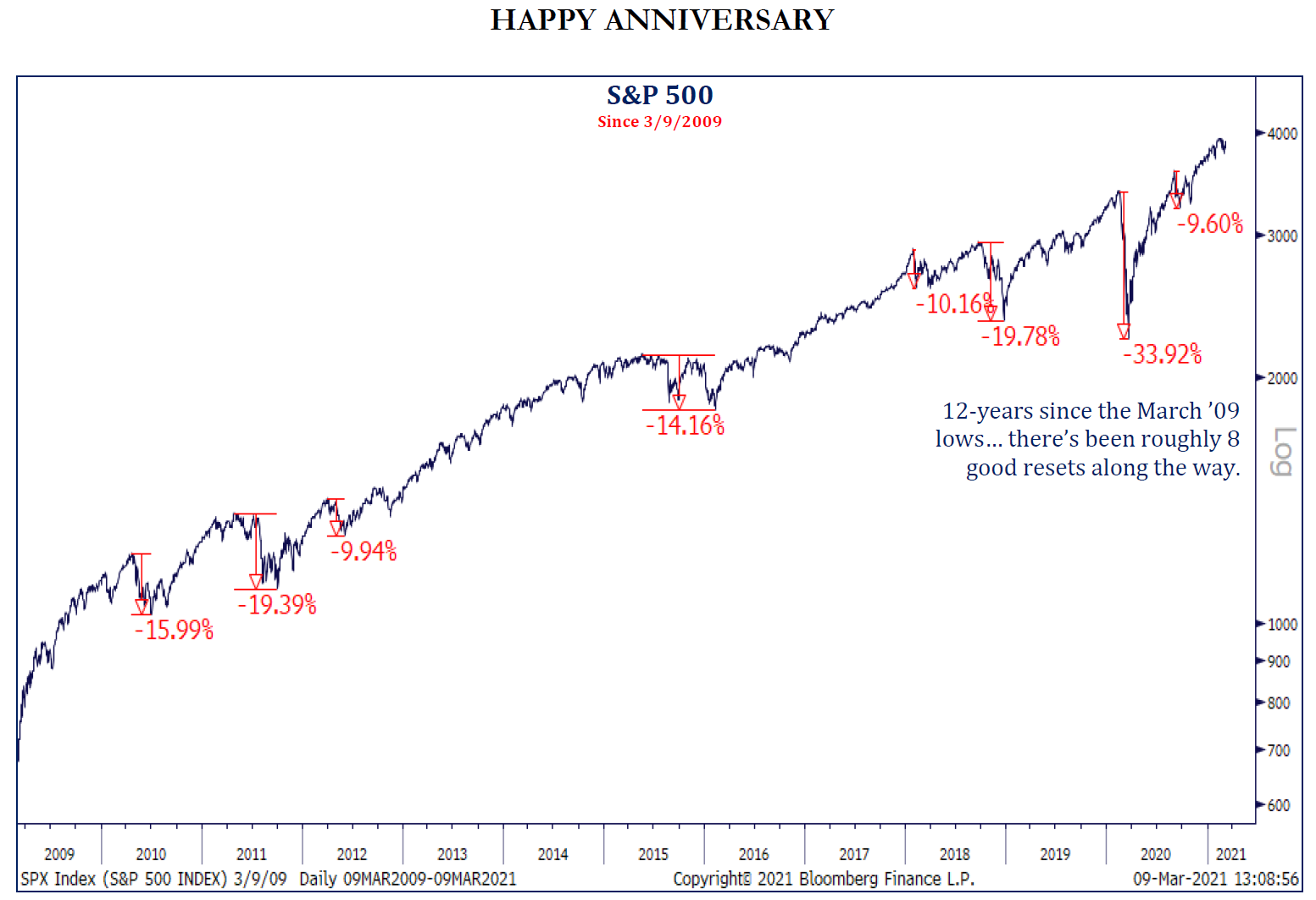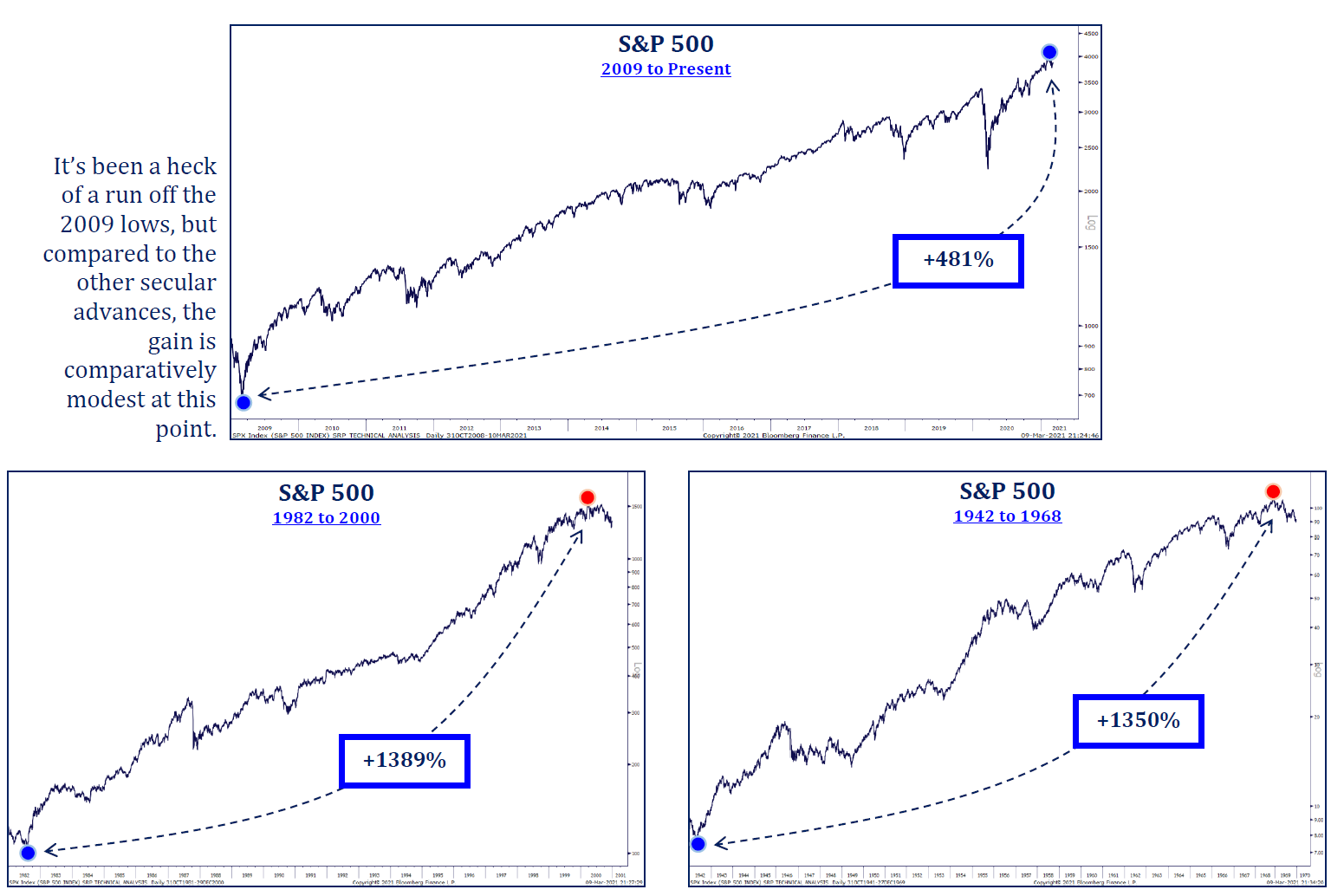Dear Valued Clients and Friends,
I had a lot I was going to cover in this week’s Dividend Cafe. I mean, some really fun stuff. We were going to go deep and wide into the bond market, into gold, into capex, into market rotation, into oil, into bubbles, into the Fed, into the dollar, into interest rates, into productivity, into inflation, into deflation, and into so many things that would have been sure to excite you beyond belief going into this weekend.
But that Dividend Cafe is going to have to wait until next week. It will happen, and it will be fun, and it will be informative and comprehensive, but it will have to be next Friday. There are two reasons for the delay.
First, I am sick. Not COVID. Just regular sick. But I have worked and worked all week through the fever and the brutal sore throat, and basically done all the things that keeps me from getting better, and avoided all the things that helps me to get better. The one thing that is really hard to do when I feel this way is high-level research and writing. I hope you understand.
But even apart from that, there are two anniversaries being commemorated this week – two! And both of them are vitally important, and warrant special Dividend Cafe attention. One of them may surprise you, or at least represent something you have forgotten. Hopefully, that will all change after your next visit, to the Dividend Cafe …
A year ago this weekend
I wrote in The DC Today the other day on the anniversary of March 11 about the events of that day (last year it was a Wednesday), the day for many that the coronavirus trauma got real. That day saw the President address the nation, international travel get shut down, Tom Hanks test positive, the NBA season get suspended, and the WHO declare COVID a pandemic. It came as the market had been in a multi-thousand point free fall that week and beginning in late February, but March 11 would not be the end of the pain – rather, in many ways, it would be the beginning.
On Thursday, March 12, I walked down Times Square from my west side city apartment bright and early for an appearance on CNBC Squawk Box. I showed up and security informed me they were not letting anyone in the building. They had me walk across the street to a diner normally frequented by Broadway show attendees and do an interview on my cellphone. Yes, things were getting weird.
It was just a perfect day to start a new employee (the market was down over 2,000 points), but I had a brand new executive assistant starting at our New York office that day. I made call after call all day, took call after call, stayed in regular consult with my investment committee, and generally did what we always do in these extreme types of days. The trouble here was, there really was nothing to say. The COVID news was bad, the market news was bad, and yet there was very little line of sight to where things would be going.
I had a lengthy dinner meeting that night with my dear friends John Mauldin and Rene Aninao. John is one of the most esteemed investment newsletter writers in the country and a valuable economist and sounding board in almost any circumstances. Rene is one of the leading macro and policy analysts in the country, and his Corbu firm has become one of leading sources of intelligence and analysis for a year now. The three of us and the other guest at dinner waxed and waned at San Pietro deep into the night, totally unaware of what would lie ahead in the coming days and weeks. Our earnest attempts at understanding what was going on, what the political ramifications would be, what the economic fallout would be, where the Fed would enter the fray, etc. would all prove to be pedestrian conjecture. We tried our best, but we couldn’t know what we didn’t know.
But as I am typing this on Friday morning, it was the Friday of this week last year (then the 13th) that so many things changed. The market actually rebounded 2,000 points, reinforcing for investors the folly of trying to trade in and out of the market violence. I wrote a Dividend Cafe that morning from a Starbucks (still open) in NYC across the street from Fox on why markets may very well get worse before they get better, and I actually appeared on set with Maria Bartiromo before the market opened for the Fox Business Wall Street Week show. That remains, to this day, the last time I have appeared on set for a media appearance.
I worked at the office the rest of the day, heavily engaged in phone calls, and covered the bases as best I could. I walked home to meet my family at the end of the day, and after walking through a nearly empty midtown, and then getting to a literally empty Columbus Circle, I called my wife and said, “let’s get back to California.” At the time we thought it would be two weeks in California then back to NYC (our kids were on spring break from school anyways). We would not return to the city for over three months.
The weekend we are going into is the one-year anniversary of what would prove to be a simply horrific weekend all around. A spouse of a TBG partner contracted COVID. A long-time client called late Sunday night in desperation about some things happening in their outside accounts. Friends were jumping in their cars and driving to Utah or Texas or Arizona to pick up kids from college and get them back to California, scared of a travel ban or total societal lockdown. Everything was dark. Everything was eerie. And Sunday Fed announcements of more QE and more liquidity facilities and more accommodations were shrugged off by the markets.
Monday, March 16 would be the worst day in the market since Black Monday of October 1987. We dropped 3,000 points in the Dow, down 13%, in a single day. And though markets would not technically reach their bottom for a few more days (March 23 to be precise), it was clear to me then – as I stated in a national call on March 17 – that we were in the midst of a “national margin call.” The panic of COVID and realization of some massive but immeasurable hit to the economy and corporate profits were no longer the basis of stock market decline – highly levered players were getting shaken out, which meant we were near a bottom.
I’d have to write for pages and pages more to capture all that would play out in the weeks ahead – the national lockdowns, the CARES ACT, the Fed’s interventions, the portfolio adjustments, the daily White House press conferences (I still have nightmares), the tragedy in New York City, the complete termination of travel in our country, etc. It was a time I will never forget, and it was a time many of you will never forget, and so much of it all came about out of events we commemorate from this very weekend, one year ago.
But wait, there’s more
We celebrated another key anniversary this week, too. And I am going to suggest it is in many ways connected to the other one I just got done talking about – at least as it pertains to the key investor takeaways involved. I am referring to the market bottom of March 2009. In this case, it wasn’t COVID – it was the Great Financial Crisis. It wasn’t a 3-4 week market collapse that found a bottom and began a quick recovery; it was an 18-month collapse (from fall 2007 all the way through March 2009, that spoke to the fragility of the entire global financial system). Stocks didn’t drop 30%, they dropped over 50%. Housing collapsed. Credit collapsed. And it seemed every policy tool known to mankind had already been implored.
The first week of March 2009 saw two additional things happen, and if one wants to believe that the market’s finding a generational bottom there and setting the stage for a deep and wide recovery is just coincidental to those two things, then more power to them. But first, there was the repeal of the FASB 157 rule, effectively, a suspension of the draconian mark-to-market accounting rules that were feeding the dragon of our credit negative feedback loop.
Second, there was the Fed’s “detail” revealed in their TALF program, where the Fed began buying troubled CMBS, levered loans, and other toxic credit assets under a special purpose vehicle for the purpose of healing the balance sheets of troubled banks.
This double potion of policy interventions seemed to be what the market needed to say, “okay, we have dropped far enough.”
The reason I bring this March 2009 market bottom up is because that is what we are all really living out of. The Dow touched the low 18,000’s for about ten minutes during COVID; it was in the 6,000’s out of the financial crisis. We went from a decade bookended by two major bubbles bursting to a huge economic and market expansion, one that was briefly interrupted by COVID, but that has now begun to resume its organic trajectory.
In both cases there was only one thing for an investor to do – wait for it to be over. Enter troubled periods with an asset allocation appropriate for the specific needs, goals, risk, and liquidity. And behaviorally, to not succumb to the pain of temporary fluctuations, by making them permanent losses.
Investor behavior during COVID was better than it was in the GFC, and I believe that was because of lessons learned from the GFC. May we continue doing that – learning from the lessons of history, applying those lessons and experiences to allow for a more resilient portfolio. May we never fall prey to the panic of the moment, but see in history the playbook for not only what has mattered in the past, but surely will be needed in the future.
Chart of the Week
Just take it all in, my friends. The history, the context, the lessons. Eight corrections of 10% or more since the financial crisis, yet a market up nearly 500%.
 *Strategas Research, Technical Strategy Report, March 10, 2021, p. 14
*Strategas Research, Technical Strategy Report, March 10, 2021, p. 14
Past secular bull markets have lasted a lot longer than 12 years, and delivered cumulative returns much larger than we have seen so far in this one. Does that surprise you?

*Strategas Research, Technical Strategy Report, March 10, 2021, p. 13
Quotes of the Week
“The real key to making money in stocks is not to get scared out of them.”
~ Peter Lynch
“A coward dies a thousand times before his death, but the valiant taste of death but once.”
~ William Shakespeare
* * *
With regards,
David L. Bahnsen
Chief Investment Officer, Managing Partner
The Bahnsen Group
www.thebahnsengroup.com
This week’s Dividend Cafe features research from S&P, Baird, Barclays, Goldman Sachs, and the IRN research platform of FactSet












